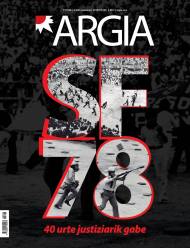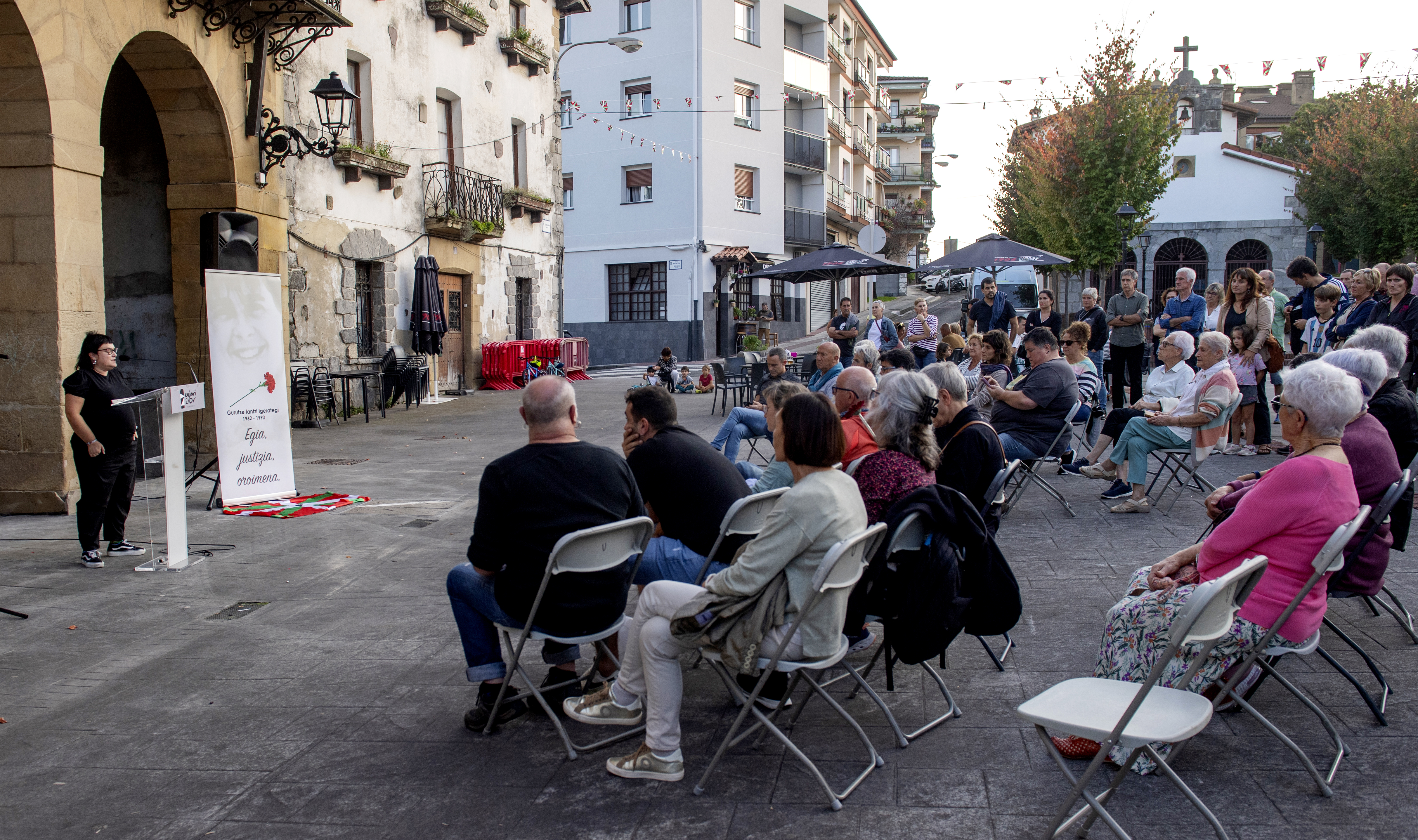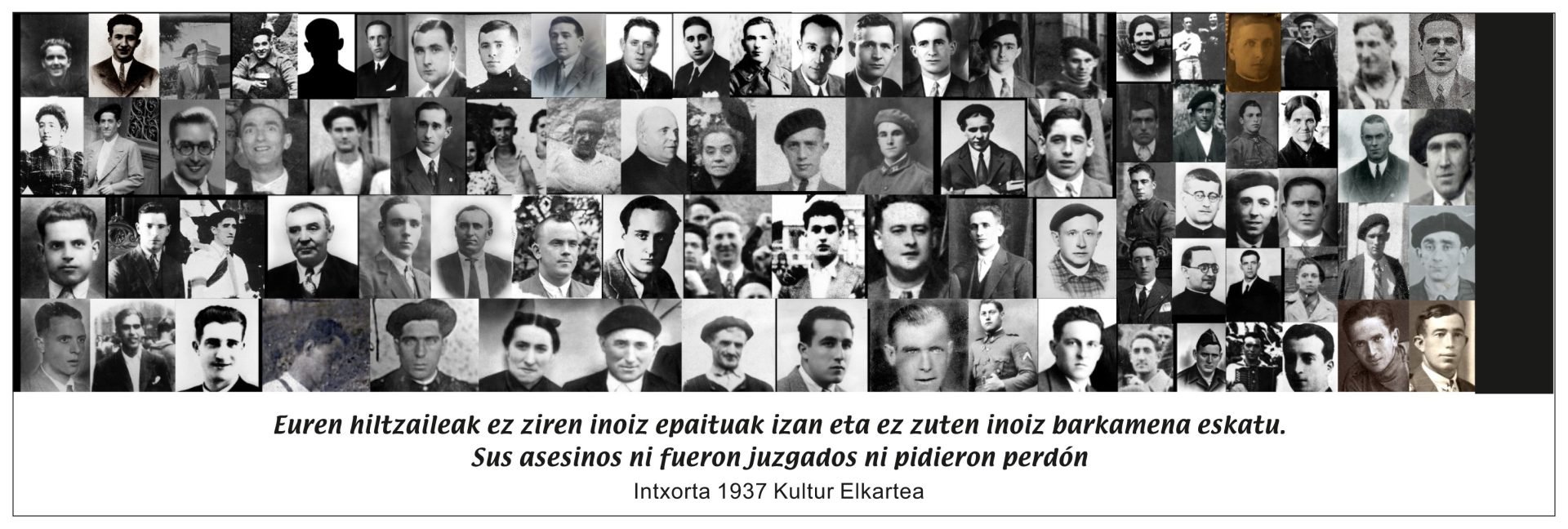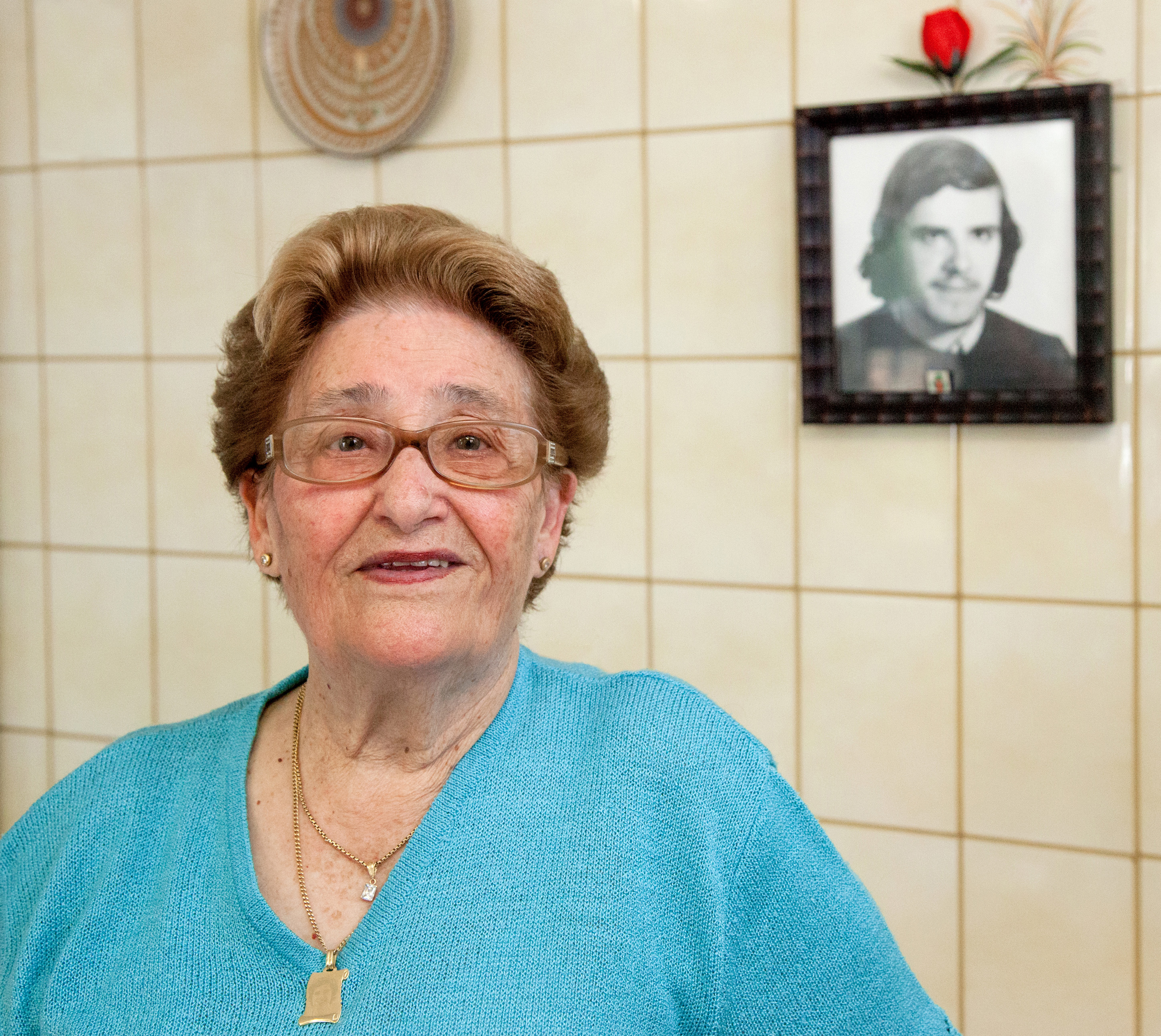Assaults on popular power
- It should be remembered. Do not forget who the Sanfermines of 1978 “broke” were. Explain what was being gestated in the revolutionary society of Navarre and all over Euskal Herria, and what they wanted to oppress the red stiffening of the streets. 40 years later, a report by a group of experts commissioned by the City of Pamplona has made it clear that there was experience, a crime against humanity concealed by impunity.
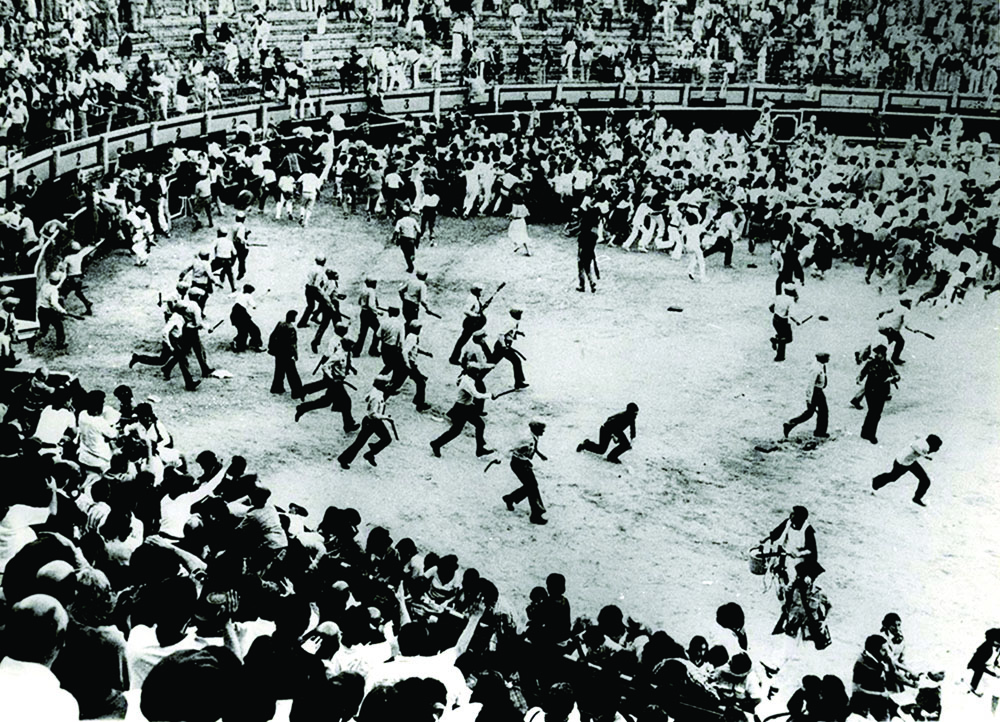
For the Basque, who is not even 40 years old, it is only in 1978 a satinated image of the old magazine that is hidden in the family shelf; the target of the boats of smoke was imagined through blurred photographs, how little the adults told him about the struggles of the recent past.
On 8 July of that year, a police patrol broke into the bullring in Pamplona with gunshots and pores in hand, on the pretext of a pro-amnesty banner. It was only the beginning of a greater armed intervention, in the coming days the police repression in Pamplona and elsewhere in the Basque Country left dozens of detainees, hundreds of wounded and two deaths: Germán Rodríguez and Joseba Barandiaran.
A truth commission made up of experts from different disciplines (Josu Chueca, Pedro Ibarra, Amaia Kowasch, Jacinto Lara, Nerea Pérez, Pepe Uruñuela and Begoña Zabala) has just written a report on these facts at the request of the City Council of Pamplona. The technical documentary analysis carried out by the UPNA professor Emilio Majuelo and Juan Carlos García has focused, among other things, on the report of the peñas committee that from the very beginning has pronounced and in all these years has stated what many citizens have thought: the offensive was prepared beforehand and the judicial investigation to punish those responsible was totally irresponsible.
An avalanche of policemen broke into the bullring in Pamplona with gunshots and pores in hand, on the pretext of a banner in support of amnesty. It was only the beginning of greater armed intervention.
It should be remembered. This satinated image of the bullring, which can become a static image, a punctual event of a particular moment, without frame; only a banner or a “disgraceful” order of Vulcano through a walkie-talkie.
Who controlled that?
The investigation carried out by the peñas of Pamplona in 1978, published in the brochure Asi Fué (So it was), is still essential to refute the official account of the police aggression, in which 4,000 testimonies were collected. The police closed the bullring before the riots took place and when dozens of law enforcement officers entered the interior with Commissioner Miguel Rubio had already concluded the discussion of the amnesty card. “Everything was quiet,” says one of the witnesses, when the police came in by surprise, mingled among the little ones coming down the hallway, hitting here and there, firing balls and smoke pots.” However, after the eviction of the sand plaza, before the festivities in which the second assault occurred, they were transferred to Pamplona by unique companies from Logroño, who attacked with real bullets those who fled on the stands. According to the study of the wedges, between 50 and 55 people were attended in the nursing room, some of them with bullets.
In the next few hours, the police officers of the same company scared citizens in the violent disturbances that occurred in the city center, where they used firearms, such as cetme bullets or pistols. One of them was the one who killed the LKI militant Germán Rodríguez in Roncesvalles Street.
The civil governor Ignacio Llano was a puppet before the commander Fernando Ávila and the lieutenant colonels who dominated him: “It’s not under my control,” he repeated in the office of the Civil Government to the representatives of the peñas, when they asked him to take steps to reassure him. Who controlled it then?

Until then, the political atmosphere of the Sanfermines was being “much slower” compared to other years, as we wrote in Zeruko ARGIA – recalling the manifestations and myths of the celebrations of 1973 and 1976. But the repressive context was getting more and more violent. “Months earlier there had been several events in the city of Pamplona that showed the tendency to suppress state apparatus,” the Committee of Experts said in its report. The demonstration on 1 May, for example, was violently dismantled by the police because of their authorization, and in the same month the “uncontrolled” caused serious disturbances in the Casco Viejo – a civil guard dressed on the street died of a stab. During these disturbances several people began the lockdown to free the detainees, arriving on 6 July to the second floor of the occupied Casa Consistorial. “The Sanfermines can be celebrated under the sign of violence,” the pot enraged a newspaper.
United with the mass movements against repression
But the tilt had been anticipated a lot. According to the expert report, between 1969 and 1977 in the Spanish State at least 47 people died in demonstrations, many of them in the Basque Country, and more than 50,000 could have been processed for political reasons. During these years there have also been serious violations of human rights: The state of emergency of 1975, the events of Montejurra and the massacre of 3 March in Vitoria in 1976, the oppression of the Week by Amnesty in 1977… “the intervention of the Sanfermines of 1978 was disproportionate and disproportionate, planned by a repressive political and police structure that functioned at the state level for more than forty years”, concludes the committee of experts.
The four territories of Hegoalde were approaching more than ever, with a demand for amnesty and self-determination, and Navarre was one of the main epicenters. But paradoxically, in 1978 the institutional process of the liberation of Navarre from other Basque territories was launched.
The Spanish Constitution was pending approval and the political reform had numerous adversaries among those seeking to break with the regime in the Basque Country. Thus, the transitional Government, presided over by Adolfo Suárez and Rodolfo Martín Villa, attempted to bridge the democratic gap through draught and blood. In this environment, the massive movement that has been called “the Basque anti-repressive society” arose, among other things, through the labor struggle and articulated in company assemblies. The four territories of Hegoalde were closer than ever to each other, claiming amnesty and self-determination, and Navarre was one of the main epicenters, as was also seen in the great strike of 11 December 1974.
Paradoxically, however, in 1978 an institutional process of dismantling Navarre from other Basque territories was launched: while the autonomies were being negotiated, the former kingdom was left in the hands of the Provincial Council, which became the last bastion of the Franco regime. It is no wonder that the early morning of 9 July the Palacio de la Diputación de Navarra was the main objective of the clashes, but the first to break the windows to the building were not the protesters, but the police officers who fired the shout of “Navarros sons of a bitch!”: “They were furious and crazy, simply against everything that was Navarra,” explained the peñas in his dossier. They wanted to give experience to the subversion.
To do so, they had buses that transported companies from the quiet area to other points of Euskal Herria, such as Errenteria or Donostia-San Sebastián. In the latter city, Joseba Barandiaran was shot when he participated in a protest about the events of Pamplona in the area of Aldapeta, at the foot of a barricade on San Bartolomé Street.
The sermon of the funeral of Germán Rodríguez of the fighting priest Patxi Larraintzar can be better understood if the focus extends into the future: “Using all the tricks of this ridiculous democracy, they seem to want to cut off the march and the breath, breaking the unity of all the Navarros and Basques.” In 1976, as in Vitoria, in 1978 in Pamplona, they wanted to drown a popular power that was uncontrollable.
40 years of impunity
The phrase of the Minister of the Interior, Martín Villa, which justifies state violence is known: “Ours are mistakes, ours are crimes.” He did so the day after the events in Pamplona, at a curious press conference on Spanish television. A few days later, he had to confess in Congress that he was primarily responsible, although he also said that he had made the "corrections" that corresponded to him. He referred to the relocation of the police chiefs, none of whom had ever been tried. With this phrase, the former Francoist minister commences a 40-year prison sentence.
.jpg)
According to the committee of experts, the division of the Sanfermines of 1978 in various summits made judicial investigation difficult, “this was probably what they were looking for.” Thus, they ask that the case be reopened in a single summary and that the evidence and documentation that was not made be collected at the time.
But it won't be easy. The conclusions of the committees of inquiry set up at that time by the municipal representatives and the Council of Ministers have never been known. Nor has the memory of the Civil Governor of that year been published in the General Archives of the Administration of Madrid. Moreover, they have asked the Superior Court of Justice of Navarre for all the information contained in the summaries, but the Court has not yet given any reply. The same is true of reports and bulletins held by ministries and police...
In 1976, as in Vitoria in 1978 in Pamplona, they tried to stifle the popular power that was uncontrollable to them.
Sanfermines 78 gogogoan, an association that for years has worked immensely for justice, truth and recognition, has repeatedly called for the documentation to be declassified. A few months ago the Parliament of Navarra made that request to the Spanish Government, with the support of almost all parliamentarians – only the PP abstained. But the Spanish Congress has closed the door to this possibility, in this case with the votes against the PP, C’s and the PSOE. The wall of impunity remains in the same place.
However, 5,000 rubber balls, 1,000 ke-buckets and 150 bullets cannot be hidden by removing a folder from the file, and less when deaths and numerous injuries were recorded. The testimonies and experiences of the people are the most convincing proof, and the Documentation Fund of the Historical Memory of Navarra already has dozens of interviews gathered around these facts. In the opinion of the experts, there are sufficient arguments to say that the 1978 Sanfermin was the “Crime against Humanity”, a crime that it does not prescribe. The City Council of Pamplona/Iruña has been recommended to file a complaint, as it is entitled to do so.
Sanfermin 78 gogoan has submitted a complaint to the European Parliament’s Committee on Petitions. At a hearing in Brussels to explain the case on 26 June, the members of the platform placed a giant copy of the black-and-white photograph of the bullring 40 years ago, which will continue to work until that image is marked and clarified what was behind it.
.jpg) Osteguna 6. Txupinazoa Iruñeko udaletxeko lehen solairutik jaurtiko da, bigarren solairua okupatuta baitago atxilotu batzuen askatasuna eskatzeko.
Osteguna 6. Txupinazoa Iruñeko udaletxeko lehen solairutik jaurtiko da, bigarren solairua okupatuta baitago atxilotu batzuen askatasuna eskatzeko.
Larunbata 8. Polizia zezen plazara sartzen da pankarta baten aitzakian. Istiluak hiri osoan. German Rodriguez hiltzen dute tiroz.
Igandea 9. Iruñeko kaleak txikituta esnatuko dira, poliziak hiria hartuta dauka eta haien irratietan agindu gordinak atzematen dira: “Indar guztiekin tiro egin, ez arduratu hiltzen baduzue!”

Astelehena 10. German Rodriguezen hiletetan 30.000 lagun. Poliziaren irratiko mezuek eta Iruñeko irudiek “akatsa” izan zela zioen bertsio ofiziala gezurtatuko dute eta Euskal Herri osora zabalduko dira.

Asteartea 11. Borroka eguna. Donostian (goiko irudian) poliziak Joseba Barandiaran astigartarra hilko du tiroz. Iruñeko peñek festak bertan behera utzi eta ikerketa herritarra abiatuko dute.
 Osteguna 13. Tentsioa gora. Errenterian Miranda de Ebroko poliziaren asaltoko konpainia batek udalerria arpilatzen du, txikizioak eta lapurretak eginez.
Osteguna 13. Tentsioa gora. Errenterian Miranda de Ebroko poliziaren asaltoko konpainia batek udalerria arpilatzen du, txikizioak eta lapurretak eginez.
Ostirala 14. Gaixoa ni ekitaldiaren ordez, manifestazio batek emango die amaiera Sanferminei.
.jpg)
Sanferminetako gertaeren 40. urteurrena dela-eta Sanferminak 78 Gogoan plataformak ekimen andana antolatu du. Urtero bezala, zita nagusia German Rodriguezen omenez hura hil zuten tokitik gertu dagoen oroitarrian izango dute, uztailaren 8an. Oroitarriak ibilbide gorabeheratsua izan du –ondokoa 1979ko argazkia da– eta gertaera haiek ez ahazteko sinbolo bilakatu da.
Ekainaren 29an, 1978ko Sanferminak gogoratzeko monumentua jarri du Iruñeko Carlos III.a etorbidea eta Orreaga kalearen artean, Dora Salazar eskultoreak egina. Plataformak, bestalde, Txupin Etxepare saria jasoko du aurten.
.jpg)
1978ko gertaerak argitzeko egiaren batzordeak erantzule posibleak dakartza bere txostenean.
Rodolfo Martin Villa Barne ministroa erantzule nagusitzat dute, “errepresio sistematiko eta orokortu baten egile nagusia da”. Miguel Rubio Rubio komisarioak eman zuen zezen plazan sartzeko agindua eta dokumentazio grafikoan eta testigantzetan “guztiz identifikaturik” agertzen da. Bere aginduak bete zituzten Benito Pérez Vázquez eta Francisco Abellán Vicente tenienteak ere zezen plazako irudietan ageri dira 40 polizia inguru gidatuz.
Fernándo Avila García komandantea izan zen ekintza polizialen diseinatzailea. Nafarroara “mendeku” bila etorri zela adierazi zuen gertaeren aurretik. César Jiménez Cacho eta Vicente Lafuente Ramírez zerbitzu-buruek eman zituzten eta betearazi zituzten aginduak irratiz.
Horrez gain, adituen txostenak dio Logroñoko erreserbako polizia armatuaren kapitainak erantzukizun larria duela, konpainia horrek eragin zituelako bala zauritu ugari eta German Rodriguezen heriotza.
Azkenik, Ignacio Llano Cifuentes gobernadore zibilak Ordena Publikoaren Batzorde Nagusian parte hartu zuen, baina ez zuen ezer egin batzorde horretako irizpideak betearazteko.
The Dual sculpture, placed on Ijentea Street, was inaugurated on May 31, 2014 in tribute to the 400 Donostiarras executed by the Franco regime during the coup d'état of 36 and the subsequent war. It was an emotional act, simple, but full of meaning. There they were relatives and... [+]









